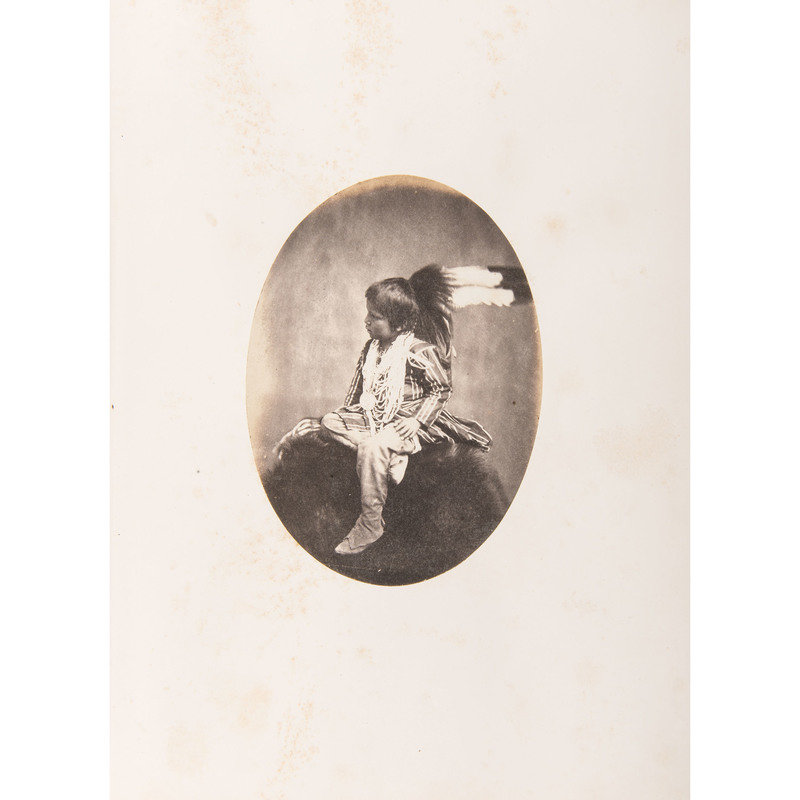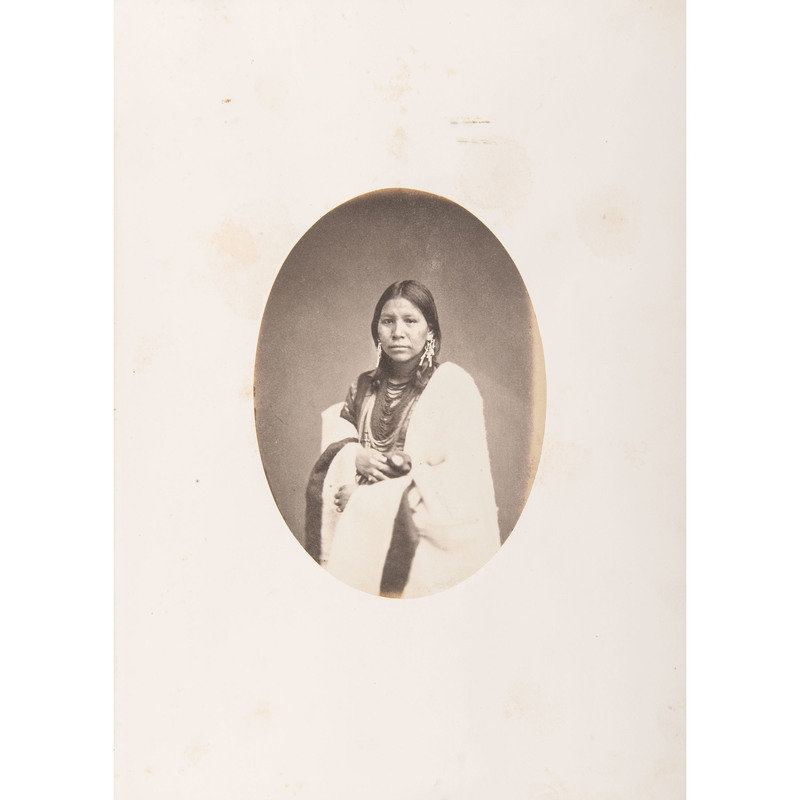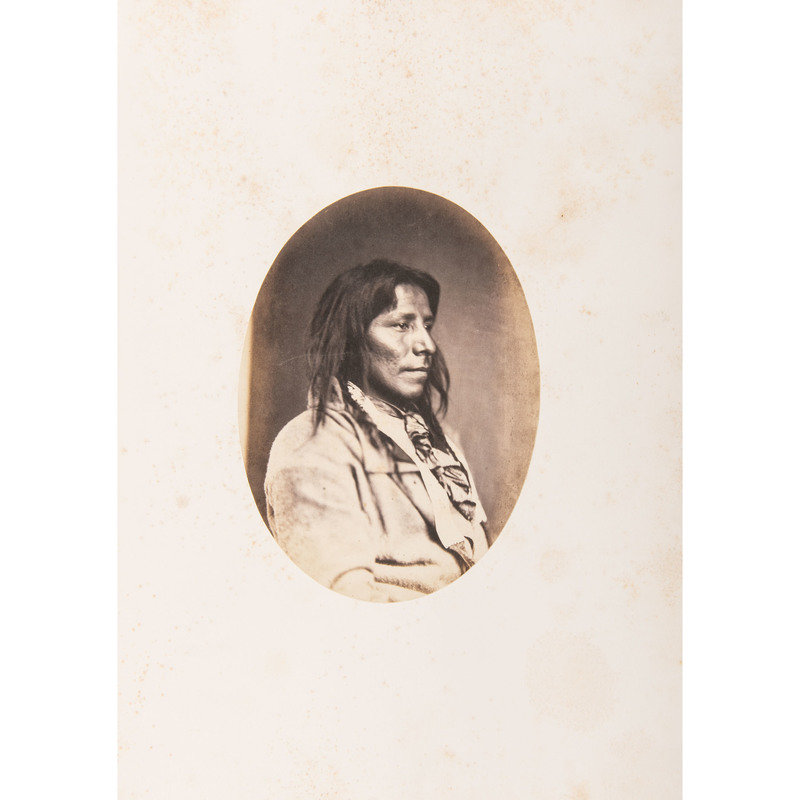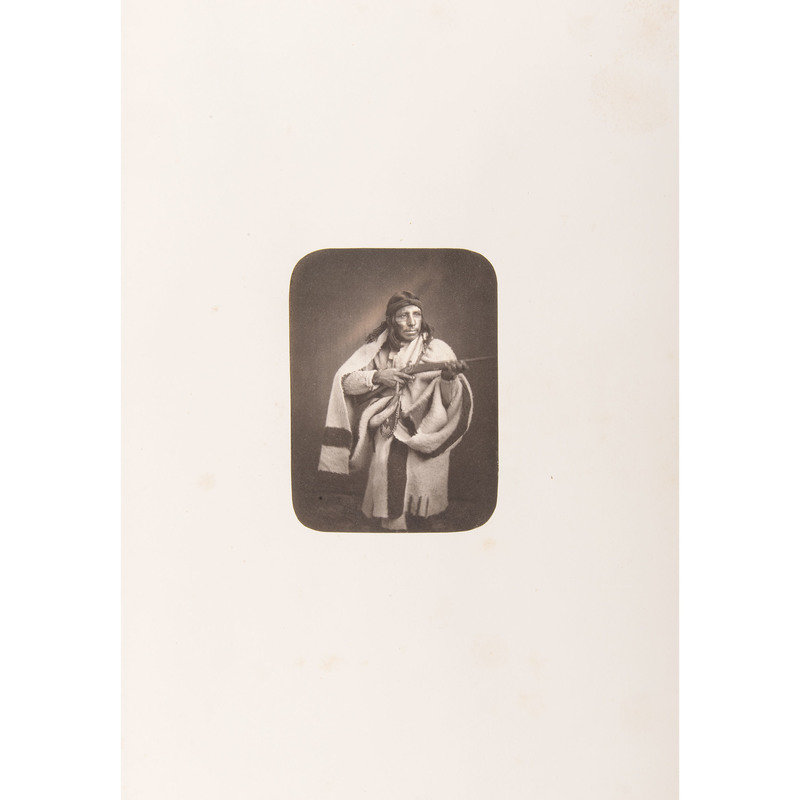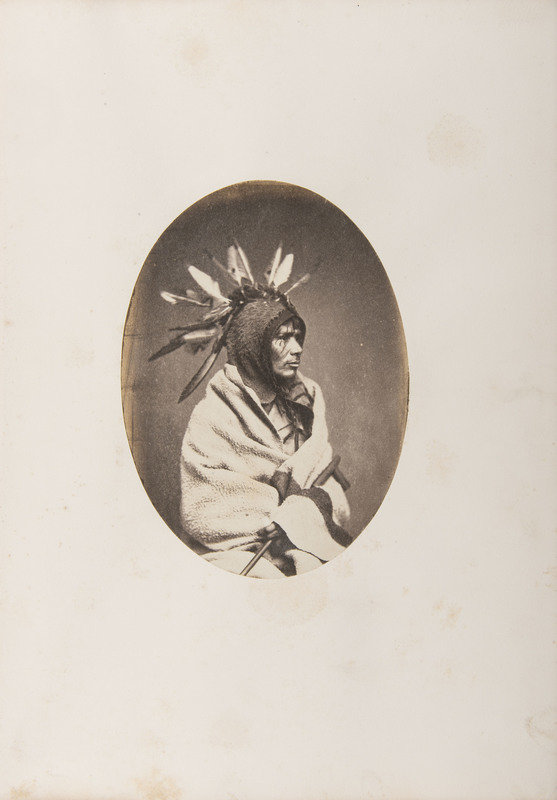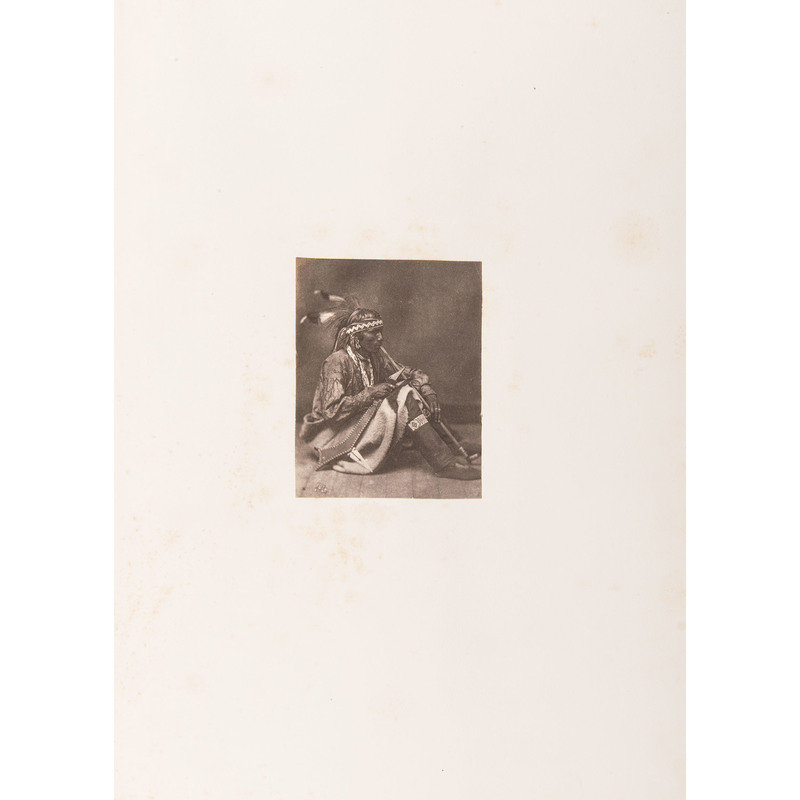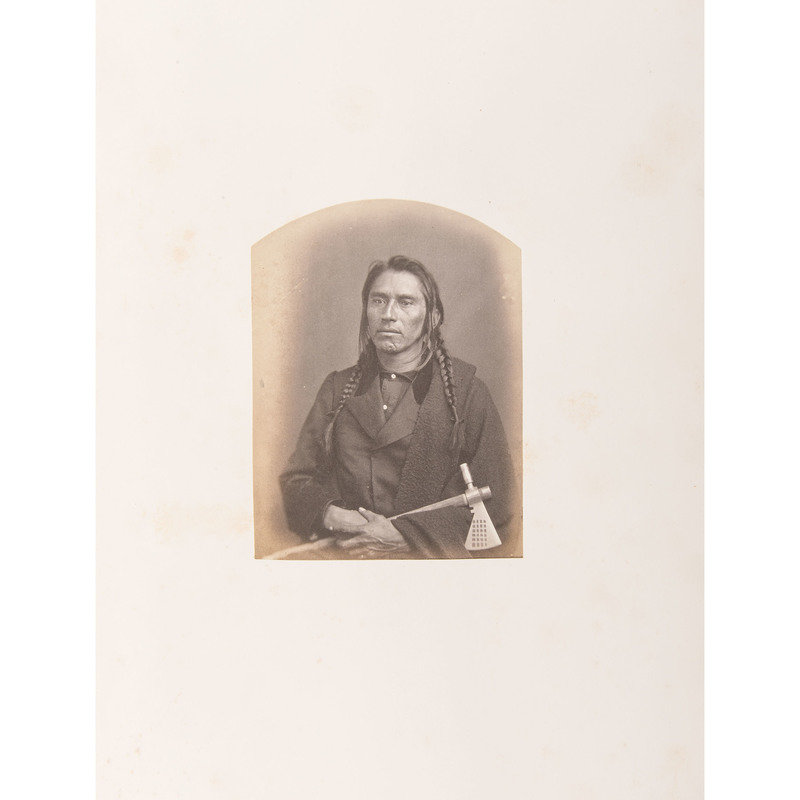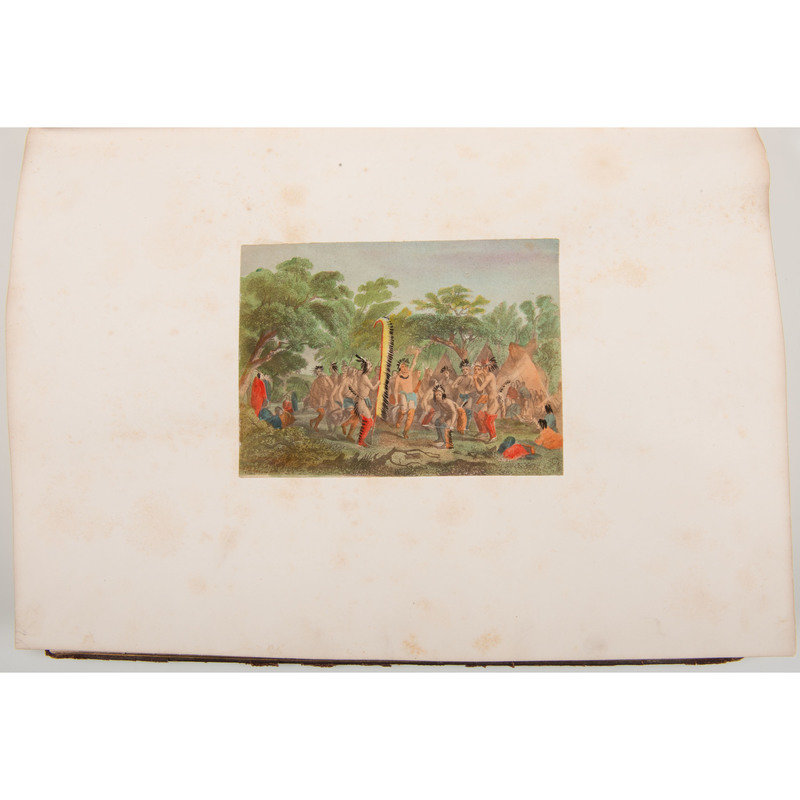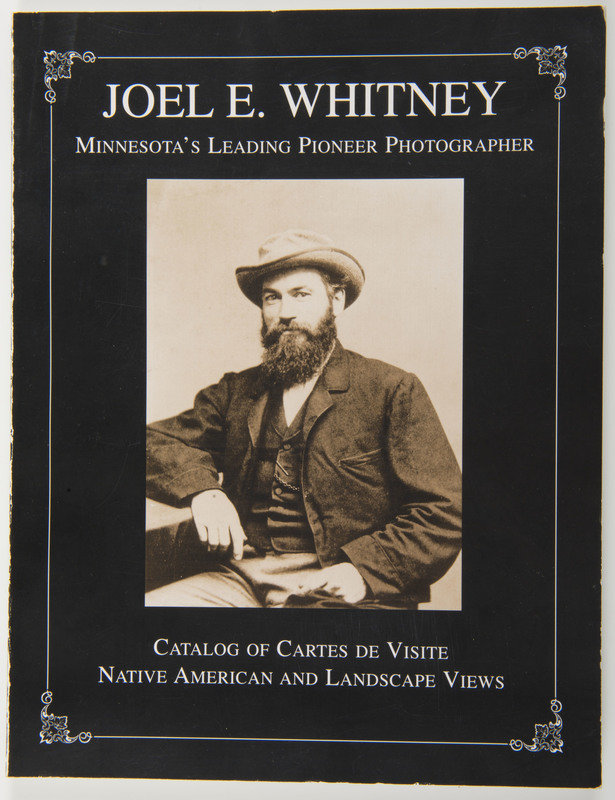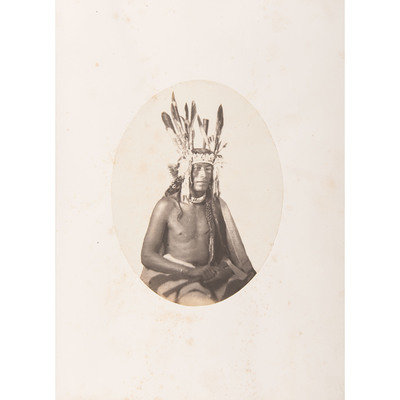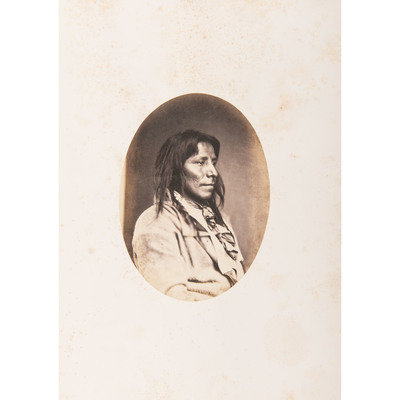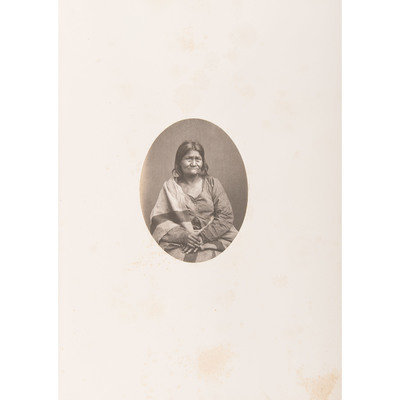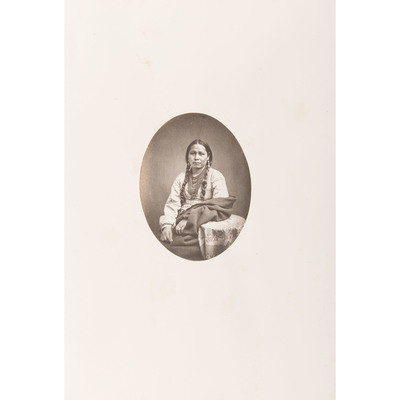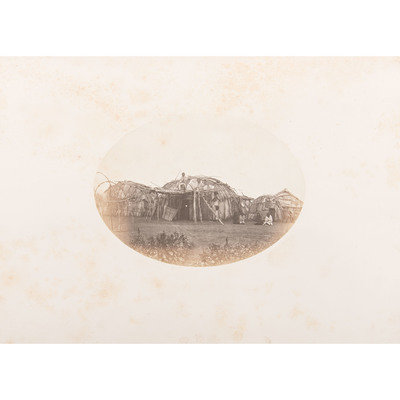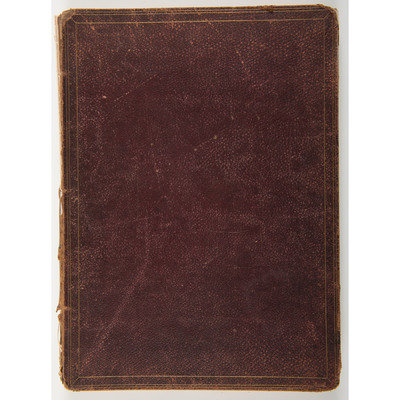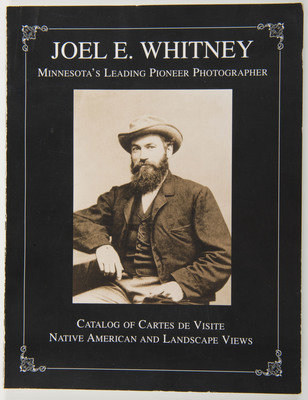Condition Report
Contact Information
Lot 249
Joel Whitney, Exceptional Album Containing Large Format Photographs of Sioux Involved in the 1862 Minnesota Uprising
Sale 1853 - American History: Premier Auction
Jun 21, 2019
10:00AM ET
Live / Cincinnati
Own a similar item?
Estimate
$10,000 -
15,000
Price Realized
$131,250
Sold prices are inclusive of Buyer’s Premium
Lot Description
Joel Whitney, Exceptional Album Containing Large Format Photographs of Sioux Involved in the 1862 Minnesota Uprising
15 x 11 in. album with leather boards and gilt page edges containing 25 salt print photographs by Joel Whitney. The first two are 7 x 9.25 in. prints of New Orleans, including one of dozens of steamboats loading cotton in New Orleans, and one of a New Orleans cemetery, followed by a photograph of the bridge over the Mississippi at St. Paul. Remaining photographs are Whitney’s famous studies of the Sioux Indians, many of whom were involved in the 1862 Sioux Uprising, as well as his images of the Chippewa and Winnebago peoples of Minnesota.
These images, which measure 3.5 x 4.5 in. to 5.5 x 7.5 in. – much larger than the CDV-sized images which are usually seen – include: a view of three Indians overlooking Minnehaha Falls; Ta-Tanka-Nazin (Standing Buffalo); Cut Nose; Ma-Za-Oo-Nie (The Little Bird Hunter); Paha-Uza-Tanka (The Great Scalp Taker); Han-Ye-Tu Was Te (Beautiful Night); Anpetu-Sapa-Win (Black Day Woman); Te-He-Do-Ne-Cha (One Who Forbids His House); and Old Bets, among several others, plus a view of Winnebago cherahs.
This lot is located in Cincinnati.


